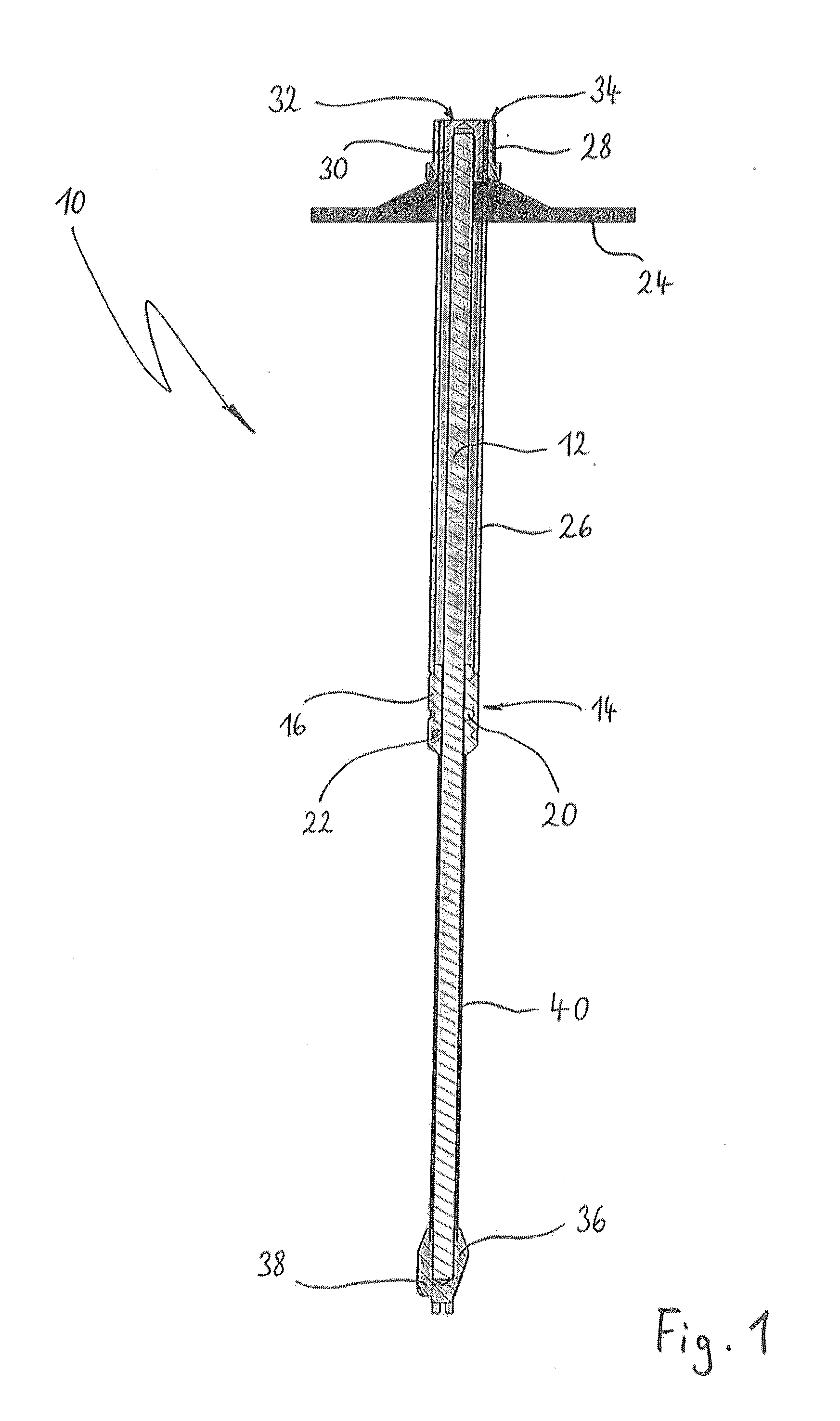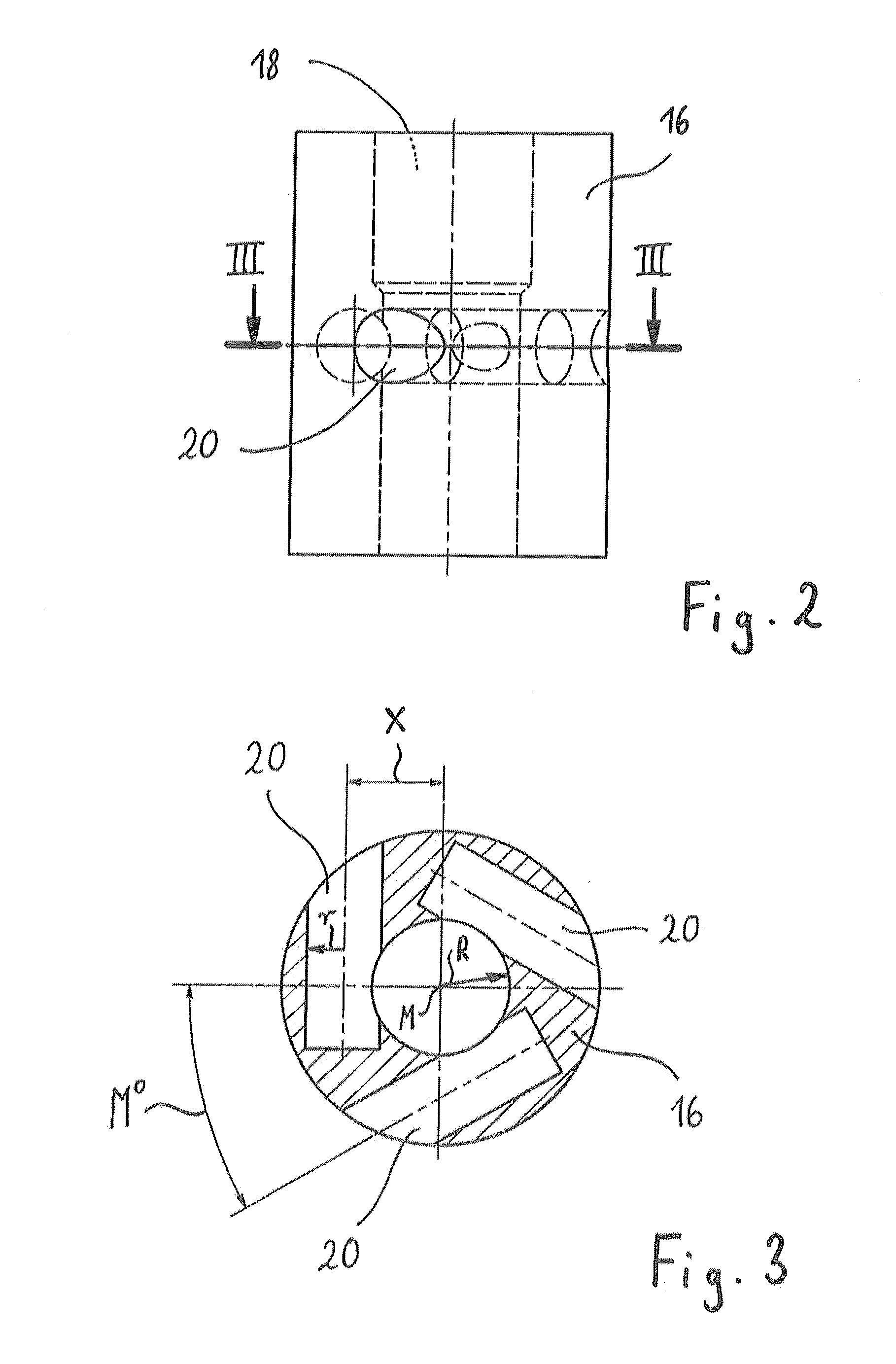Sliding anchor
a technology of sliding bolts and bolts, applied in the direction of screwing, load-modifying fasteners, threaded fasteners, etc., can solve the problems of gradual use-up of sliding paths in dependence on rock movements, lengthening of sliding bolts, and inability to detect from the outside, so as to achieve rapid and reliable detection.
- Summary
- Abstract
- Description
- Claims
- Application Information
AI Technical Summary
Benefits of technology
Problems solved by technology
Method used
Image
Examples
second embodiment
FIGS. 4 to 6 show a sliding body cage 16′, the basic construction of which corresponds to the sliding body cage 16. Unlike the sliding body cage 16, however, the sliding body cage 16′ has two planes disposed one above the other and having three recesses 20 each, wherein the recesses 20 of the one cross-sectional plane are offset in circumferential direction relative to the recesses 20 of the other cross-sectional plane such that all six recesses 20 together are distributed uniformly around the circumference of the sliding body cage 16′.
Each recess 20 is provided for receiving an, in the present case circular-cylindrical, sliding body 22, the outside diameter of which apart from conventional tolerances corresponds to the diameter of the recess 20, i.e. which completely fills the cross section of the recess 20. FIGS. 7 and 8 show the views, which correspond to FIGS. 5 and 6 and in which a sliding body 22 designed in the manner described above is disposed in each recess 20. As is clear...
first embodiment
In the sliding bolt 10 illustrated in FIG. 1, the maximum length by which the sliding bolt 10 may yield, referred to as the sliding path, is defined by the axial distance between the stop element 30 and the sliding body cage 16 or 16′. If the sliding bolt of FIG. 1 yields because of increased load, then the sliding body cage 16 or 16′ slips in the direction of the stop element 30. When the sliding body cage 16 or 16′ strikes the stop element 30, a further lengthening of the sliding bolt 10 is no longer possible. During the sliding operation the stop element 30 moves from its initial position flush with the assembly adapter 28 further and further into the first protective tube 26, this making it possible to tell at a glance how far the sliding bolt has already yielded.
In the second embodiment of the sliding bolt 10 represented in FIG. 9 it is even easier to “read” the sliding path that is already used up because, as the bolt 10 slides, the colour-marked regions 42, 44 and 46 disappea...
PUM
 Login to View More
Login to View More Abstract
Description
Claims
Application Information
 Login to View More
Login to View More - R&D
- Intellectual Property
- Life Sciences
- Materials
- Tech Scout
- Unparalleled Data Quality
- Higher Quality Content
- 60% Fewer Hallucinations
Browse by: Latest US Patents, China's latest patents, Technical Efficacy Thesaurus, Application Domain, Technology Topic, Popular Technical Reports.
© 2025 PatSnap. All rights reserved.Legal|Privacy policy|Modern Slavery Act Transparency Statement|Sitemap|About US| Contact US: help@patsnap.com



